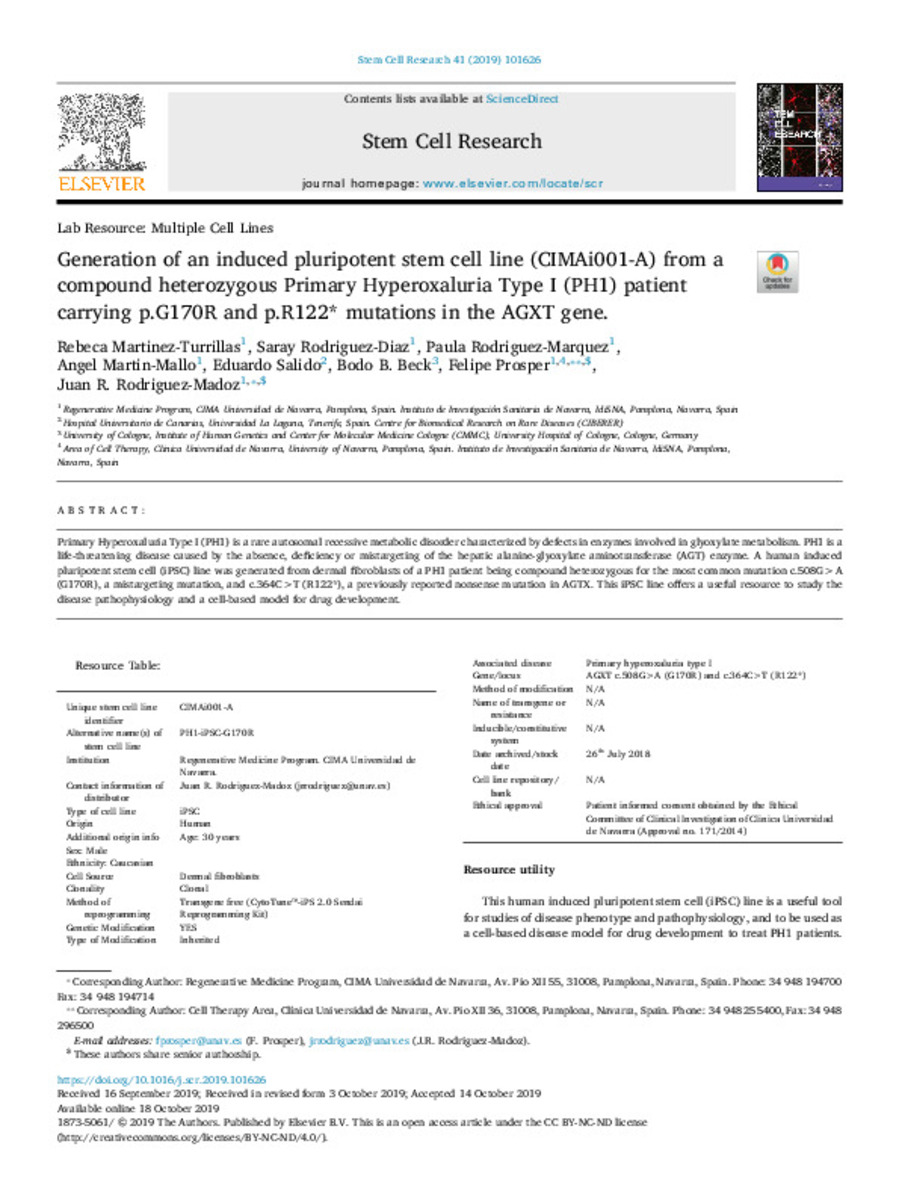Generation of an induced pluripotent stem cell line (CIMAi001-A) from a compound heterozygous Primary Hyperoxaluria Type I (PH1) patient carrying p.G170R and p.R122* mutations in the AGXT gene.
Palabras clave :
Primary Hyperoxaluria Type I (PH1)
Induced pluripotent stem cell (iPSC)
Life-threatening disease
Mistargeting mutation
Fecha de publicación :
2019
Nota:
This is an open access article under the CC BY-NC-ND license
(http://creativecommons.org/licenses/BY-NC-ND/4.0/).
Cita:
Martínez-Turrillas, R. (Rebeca); Rodriguez, S. (Saray); Rodriguez-Marquez, P. (Paula); et al. "Generation of an induced pluripotent stem cell line (CIMAi001-A) from a compound heterozygous Primary Hyperoxaluria Type I (PH1) patient carrying p.G170R and p.R122* mutations in the AGXT gene.". Stem Cell Research. 41, 2019, 101626
Aparece en las colecciones:
Estadísticas e impacto
0 citas en

0 citas en

Los ítems de Dadun están protegidos por copyright, con todos los derechos reservados, a menos que se indique lo contrario.







